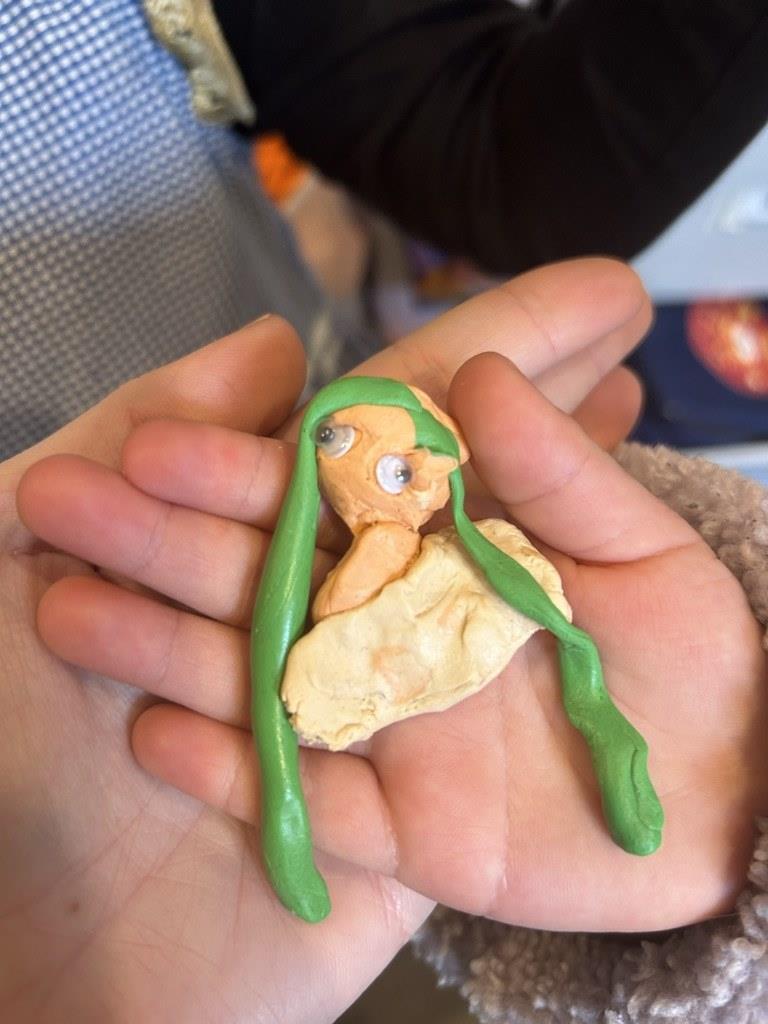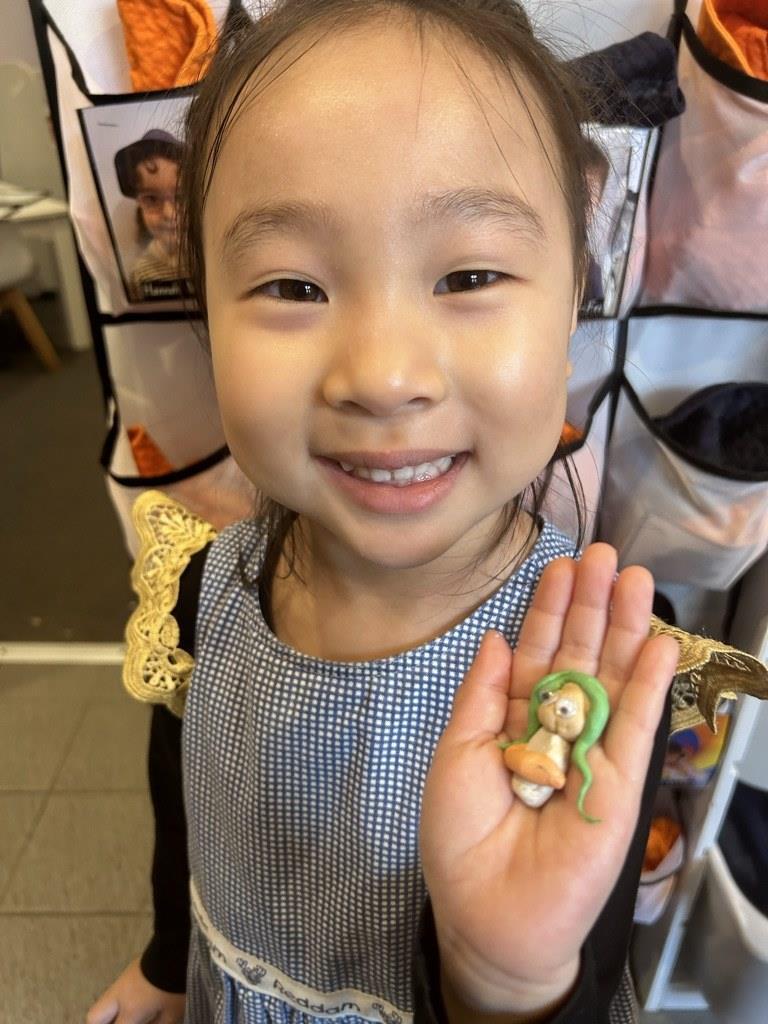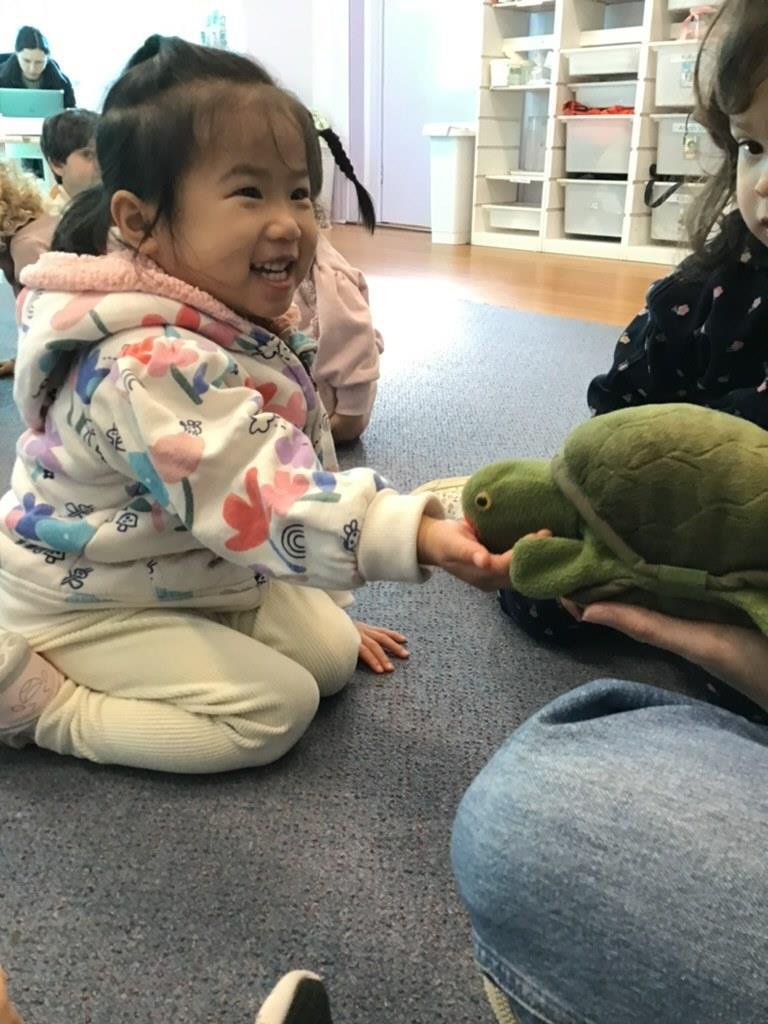Reddam ELS Woollahra Week 9

Dear Parents and Caregivers,
The final week of the term was as busy as ever for the children and teachers in the ELS. Although we know that some of the children will continue to enjoy their time together during the Holiday Care programme, during which they will have fascinating new things to learn each day, for the rest of the school it will be a chance to spend some time at home, or perhaps even travelling with their families.

As we reflect on the term that has passed, it is with a sense of accomplishment and fulfilment –especially as we see the wonderful progress which the children have made in so many different ways. With teachers and parents working alongside each other, we have created a community where the children have felt loved, supported, and inspired to explore their potential. We have celebrated milestones, shared laughter, and embraced the beauty of learning together.
Of course, no school can be successful without this synergy and for this we are most grateful. As such, we would like to extend our deepest appreciation to our incredible teachers. Their dedication, passion, and unwavering commitment to the children made this term an exceptional one. They nurtured the children’s innate curiosity, sparked their imaginations, and instilled in them a love for learning.
We must also recognise the exceptional teamwork and collaboration that exists within our ELS. From the administrative staff, who keep everything running smoothly behind the scenes, to the cleaning and support staff who ensure our classrooms are safe and inviting – each member of our team has played an integral role in creating a nurturing and stimulating environment for our children. Their dedication and hard work are truly commendable.
I would like to express my heartfelt gratitude to the parents, caregivers and other family members who have entrusted us with their most precious treasures. Your unwavering support, open communication, and collaboration have been invaluable. We appreciate the trust you have placed in our ELS and the active role you play in your child's education. Your involvement in so many ways has strengthened our partnership and has ensured the best possible learning environment for the children.
Finally, to our very special boys and girls – thank you for your boundless enthusiasm and zest for life. Your smiles, hugs, and inquisitive minds bring joy and inspiration to us all. It has been an absolute pleasure watching you learn, grow, and form lasting friendships this term. We look forward to the second half of the year, when we will see you grow even more, not only physically but in your love for learning, inquisitive natures and creativity.
Have a wonderful break!
Dee Pitcairn PrincipalHappy Birthday
Reddam House ELS would like to wish a very Happy Birthday to
 Lachlan Shi, Harlow Murray, Avalon Andonovski, Kaitlyn Wong, Charles Woodward, Rafael Biller
Lachlan Shi, Harlow Murray, Avalon Andonovski, Kaitlyn Wong, Charles Woodward, Rafael Biller
We welcomed this week with activities reflecting our “Watch me grow” provocation.


The very hungry caterpillar story explores growth and the role of development and of the elements of sunlight and nutrition in the growth cycle. The children began working on creating our own very hungry caterpillar as they started painting plates. The children had a fun morning, filling their plates with foods from the magazines which our families provided for this activity.
At Reddam ELS you will see a strong relationship between the child and their educator. We believe that these strong relationships are built through effective communication, respect and gratitude. When children feel valued, supported and listened to, they develop a sense of belonging. The concept of the child’s voice and children’s participation in decision making has received support in international educational policy to the UN Convention on the Rights of the Child: “Children have the right to have their options heard and views respected” .
There was lots of conversation happening between educators and children and their peers too, as they named different foods. Good nutrition is essential to healthy living and enables children to be active participants in their learning. As the children arrived at school earlier in the week, they were met with the question “What is your favourite fruit or vegetable?”
Skye picked up the banana and said, “nana nana” and pretended to eat the banana. With a huge smile, Bodhi picked up many different foods, including tomatoes, lettuce and celery. Henry chose the watermelon and his Mum said at drop off that watermelon is Henry’s favourite fruit. Noah was eager to pick his favourite, so he picked up the chicken skewer and said “chicken”, and later when we read the book Noah said that he liked “cheese” and “tomato”. Hugo J chose the carrots and sweetcorn while Hugo C picked up the banana when he was asked what his favourite was. Frankie said “watermelon” and “crackers” but later came back to the teacher and said he likes “cupcakes” too. When Florence arrived at school with her grandma, she chose the “apple” and “banana”. Owen eagerly said “pear” and Louis picked up the orange. Ruby’s favourite was clearly watermelon as she held this up in the air with a smile ear to ear.
A strong sense of wellbeing strengthens a sense of belonging and encourages children to feel confident in being. Wellbeing includes many factors such as social, sleep and rest, physical health, and nutrition. Wellbeing is related to resilience, managing emotions, developing self-regulation and building perseverance and persistence in day-to-day experiences.
Learning about healthy lifestyles, including nutrition which is our theme for this week, is integral to wellbeing and self-confidence. As children become more independent, they take greater responsibility for their health, hygiene and personal care and become more mindful of themselves and of others. We can see the children's confidence and independence growing and the interest to complete
more self-help skills and independence and we feel this may be the direction we go for our next term's provocation as we observe the children further throughout the next few weeks.
This year in the Nest the children have already had many opportunities to learn about food choices but also about the importance of physical active play and attention to fine motor skills, gross motor skills and fundamental movement skills. These are the foundation for your child's growing independence, physical skill and satisfaction in being able to do things for themselves.
Our families received the updated winter menu with our daily reflection this week. The children particularly enjoyed the warm porridge and jam. Yum! It certainly warms our bellies after a play outside on these chilly mornings.
It is unbelievable to think we have already reached the end of term two. We are so impressed and thrilled with how settled, comfortable and confident the children feel in their school environment, as many friendships have emerged and continue to blossom.
We welcomed some fun sensory activities throughout the week too which the children were thrilled about. Painting on the plexiglass was certainly popular and so much fun! Sensory play encourages learning through exploration, curiosity, problem solving and creativity. These activities stimulate your children’s senses which supports brain and language development, gross motor skills, fine motor skills and social skills.
To end our “Watch me grow” provocation, on Wednesday and Thursday morning the families were invited into the Nest to spend a special moment with their children and to look through their individual reflection journals. It was so beautiful to see how happy and proud the children were to show off their work and to see how much we have grown already this year.
As we know, photos are a perfect visual tool to capture a child's learning during an experience and to provide an insight into their skill and development. This week our families will receive a selection of photos that captured your child’s learning journey in the Nest for Term One and Term Two.
We hope that you will enjoy watching it as much as our team has in being part of your child’s learning journey this year so far.
We look forward to an action-packed Holiday Care programme which will begin on Monday.




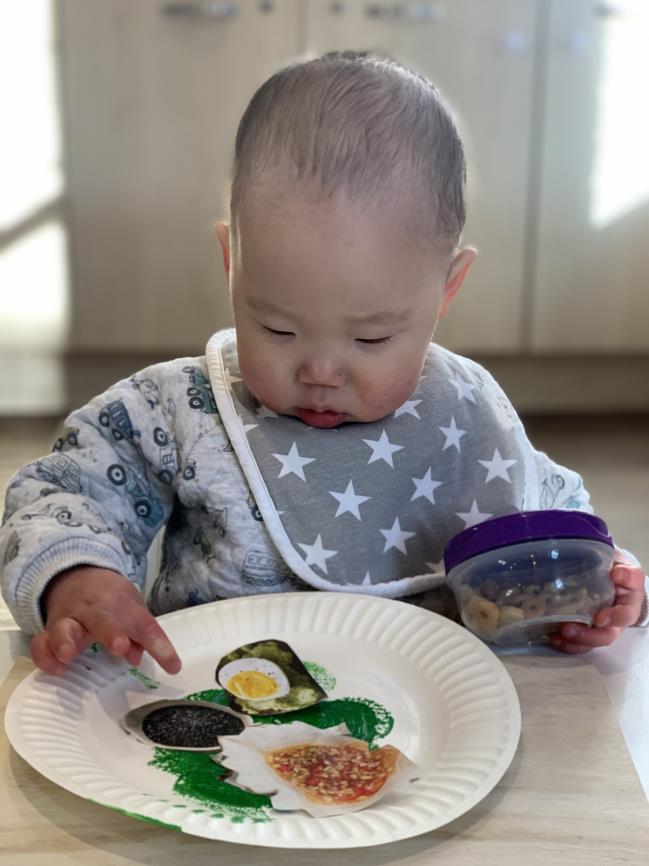







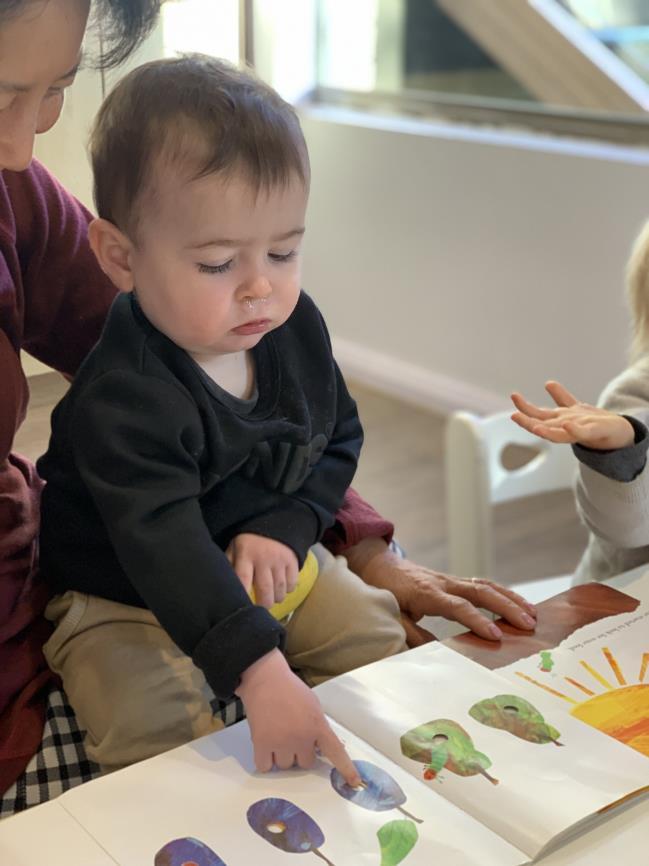

















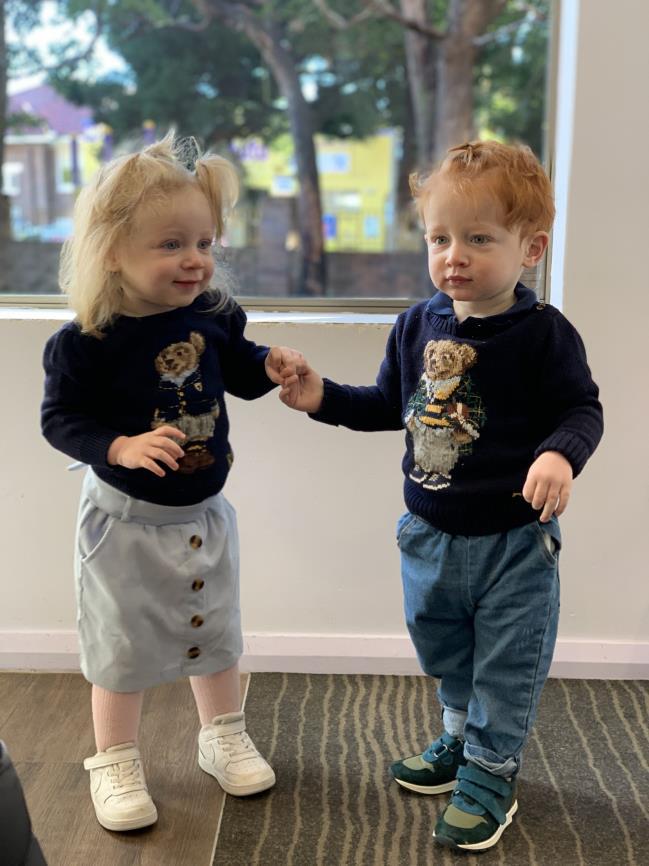






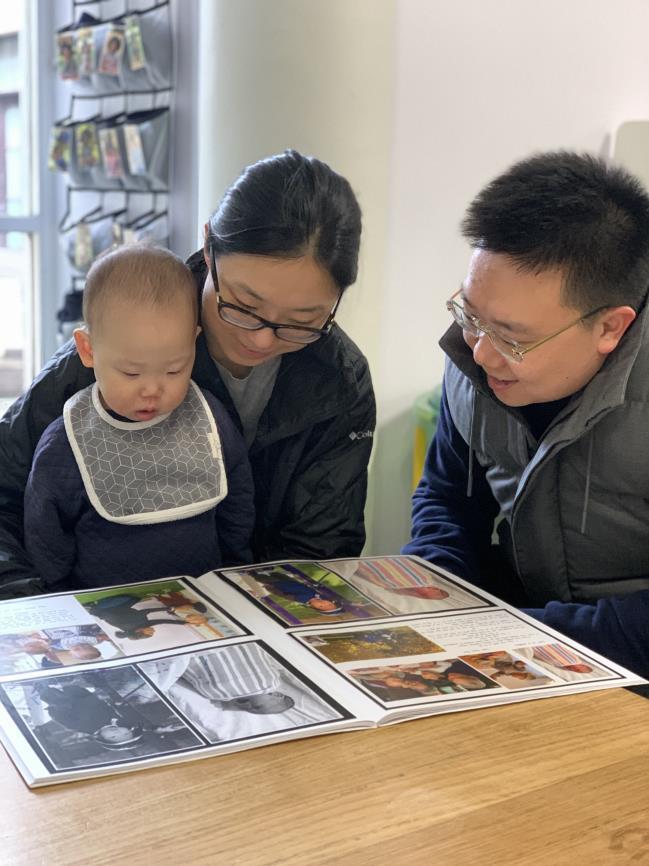

Fledglings
A colourful term in the Fledglings
It is hard to believe that nine weeks have gone past in the Fledglings. As people often say, “Time flies when we are having fun”, and this was definitely the case in our classroom.
Throughout Term Two, the children became more confident to communicate verbally with their teachers and peers. In the small sentences they were using, most times, they talked about the colour of a toy, of their clothes, hair bands and more. We went from learning about nature and Australian animals to identifying and naming colours.
Term Two was also a time where the Fledglings started to develop more social interactions between each other. Children were seeking for their peers to initiate games, spend time together and genuinely have fun. Like all new skills, children started to learn about respecting their friends’ personal space and

about being kind and gentle. A great way to help them at this age to understand these concepts is by promoting sensory experiences.
When planning, we made sure to include lots of sensory experiences, where the children could use their hands to manipulate different textures, for example, finger paint, playdough, blocks, water and nature.
We mostly used the book inspired by Louis Armstrong famous song “What a wonderful world” to show the group all the different colours around us. It was evident that the children were mesmerised by the colours of the rainbow. This was a great way to engage them in the experiences promoted in the classroom. From drawings to amazing resources, our little Fledglings discovered colours everywhere around them and started to use the new vocabulary to communicate with their teachers and peers at group time.
As we head to another fun time in Holiday Care, we will take the time to observe the children and see what their new interests are so we can announce the new provocation for Term Three.
Whether at Reddam or braving the world, we wish all families a great school holiday time.
Learning Outcome 1: Children have a strong sense of identity. Children develop their emerging autonomy, inter-dependence, resilience and sense of agency. Children learn to interact in relation to others with care, empathy and respect.
Learning Outcome 2: Children are connected with and contribute to their world. Children develop a sense of connectedness to groups and communities and an understanding of their reciprocal rights and responsibilities as active and informed citizens. Children become aware of fairness.
Learning Outcome 3: Children have a strong sense of wellbeing. Children are aware of and develop strategies to support their own mental and physical health and personal safety.
Learning Outcome 4: Children are confident and involved learners. Children develop a growth mindset and learning dispositions such as curiosity, cooperation, confidence, creativity, commitment, enthusiasm, persistence, imagination and reflexivity. Children transfer and adapt what they have learned from one context to another.
Learning Outcome 5: Children are effective communicators. Children interact verbally and non-verbally with others for a range of purposes. Children engage with a range of texts and gain meaning from these texts.








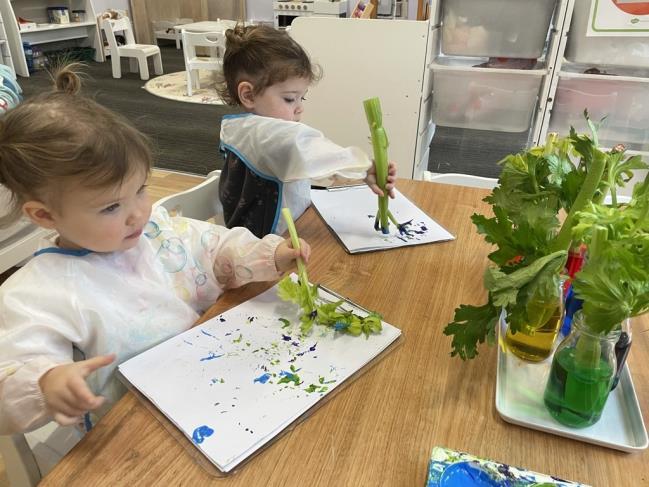




 Cardboard Box Cars
Cardboard Box Cars
Over the past two weeks we have been working on a class project in 2E, reusing some cardboard boxes to make some cars! Some friends hopped inside the carboard boxes which were on the deck when some teachers were unpacking some supplies, sparking the idea to create our own vehicles to ride in! First, we used sponge rollers to cover all the edges of the boxes in either red or blue paint (for the MondayWednesday class) or green and purple (for the Thursday-Friday group), or some children did both. The foam rollers created an opportunity for children to strengthen their hand and arm muscles as the gripped the tool and moved it back and forth. It also created a learning opportunity which stimulated creative and critical thinking skills as children learnt to move the paint around and began to visualise the box turning into a car.
The next step was the wheels. We painted them black and used toddler-sized brushes to give children proper control. Astrid and Remy were the most dedicated, making sure all the white spots were completely covered! This showed not only great persistence but also encouraged attention span, selfregulation and mindfulness as children could focus on the task at hand.
The final step in our project was to glue on the wheels, lights, and dashboard image with a steering wheel. Here, the children used a third type of tool, a spreader, to spread the glue evenly across the paper plate or image. This tool encouraged fine motor development as the small shape meant that they had to pinch and drag it across to ensure that the pieces stuck on well! Billy and Ethan were superstars, making sure all the pieces were stuck on tightly.
Finally, the box cars were ready to be enjoyed by all. The children were so excited to hop inside! Ella was driving “to the hospital because I hurt my foot”; Ethan was driving “to see an octopus”; Remy was “buying some food for mummy at Woolies because she wants some food...beep beeeeep!”; Will said “I’m driving to mummy and daddy.”
EYLF Outcomes
● Outcome 1.2 Children develop their emerging autonomy, inter-dependence, resilience and sense of agency.
● Outcome 3.1 Children become strong in their social and emotional wellbeing.
● Outcome 4.1 Children develop dispositions for learning such as curiosity, cooperation, confidence, creativity, commitment, enthusiasm, persistence, imagination and reflexivity.
● Outcome 4.4 Children resource their own learning through connecting with people, place, technologies and natural and processed materials.
● Outcome 5.3 - Children express ideas and make meaning using a range of media.



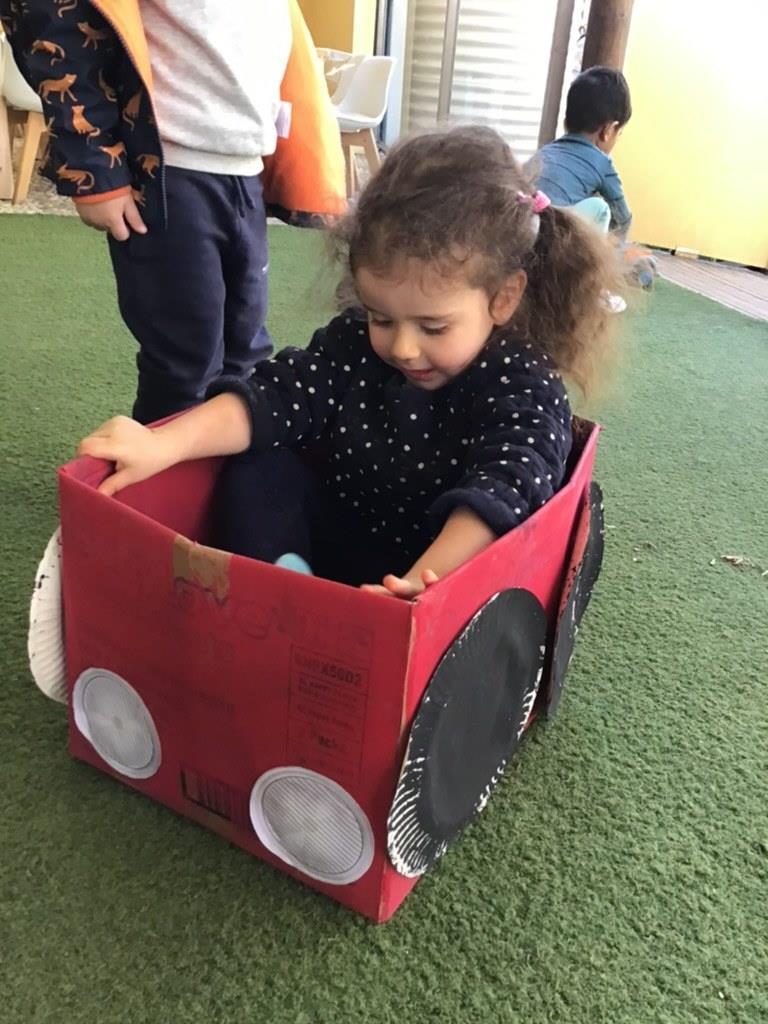













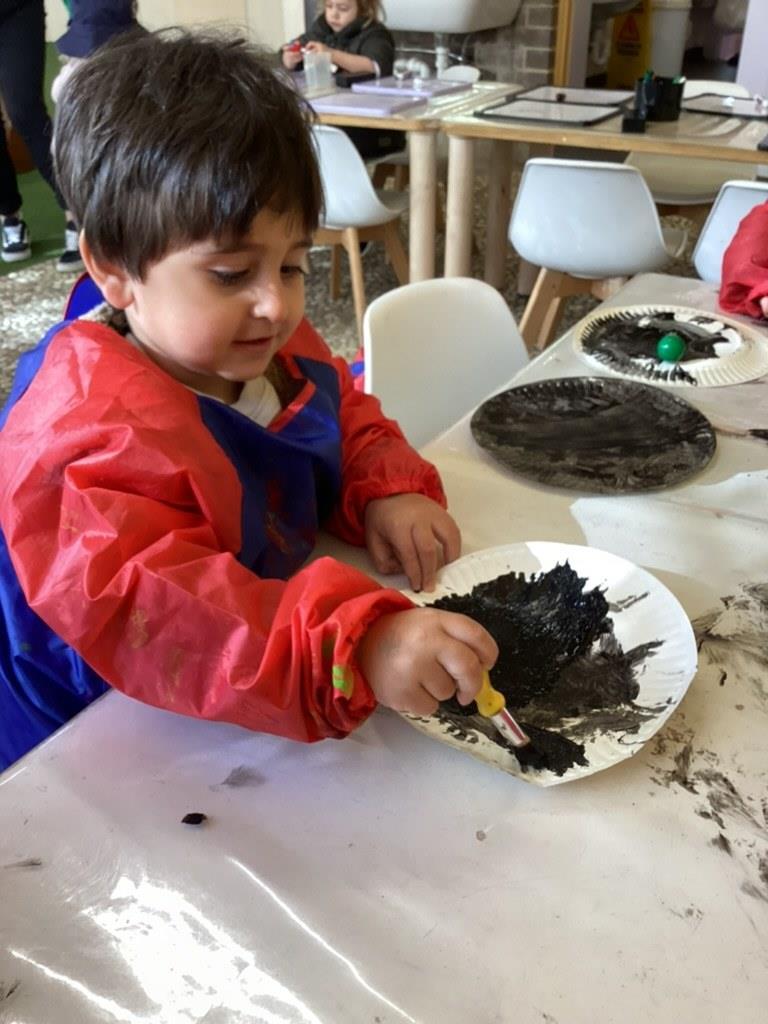

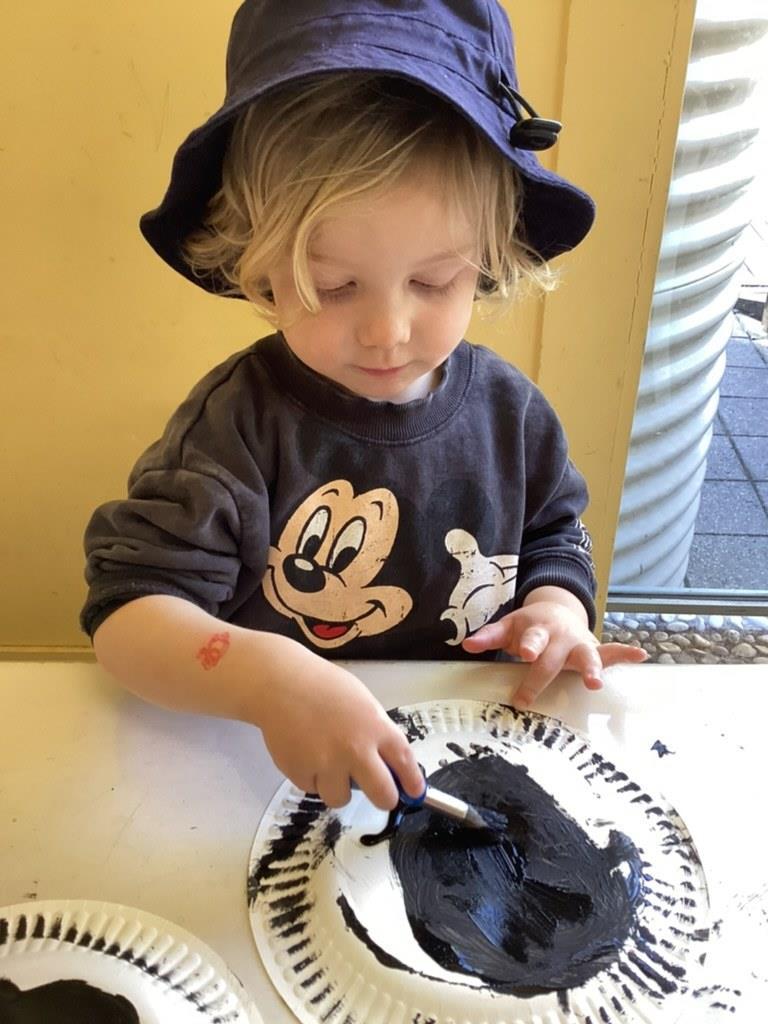


















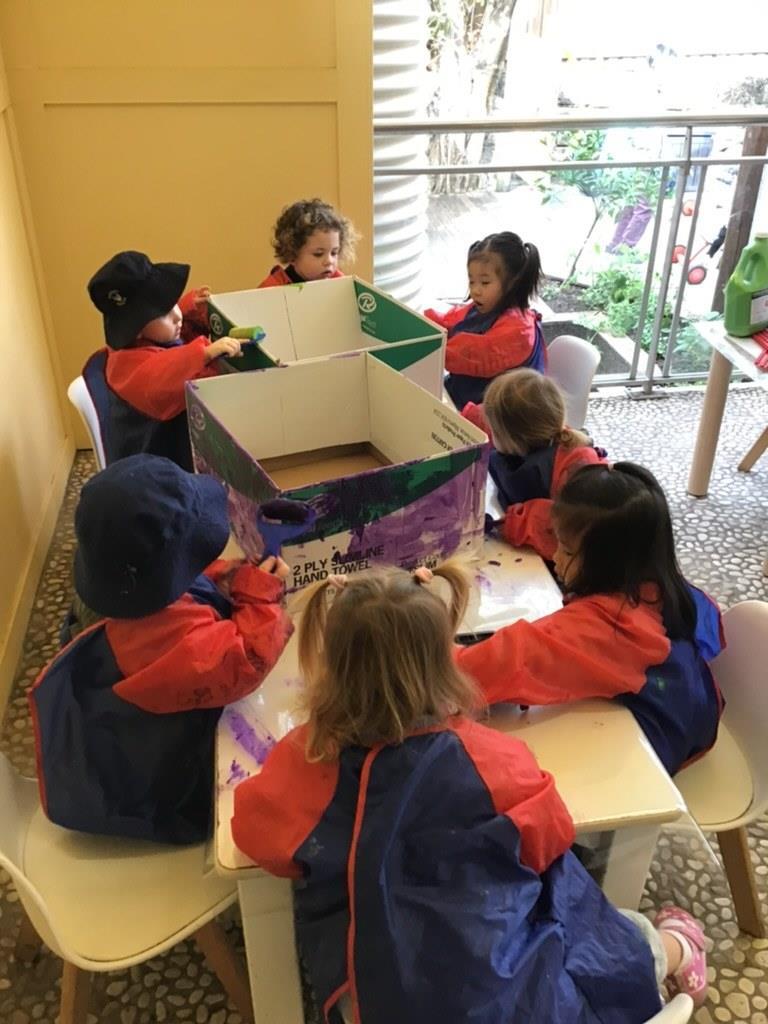



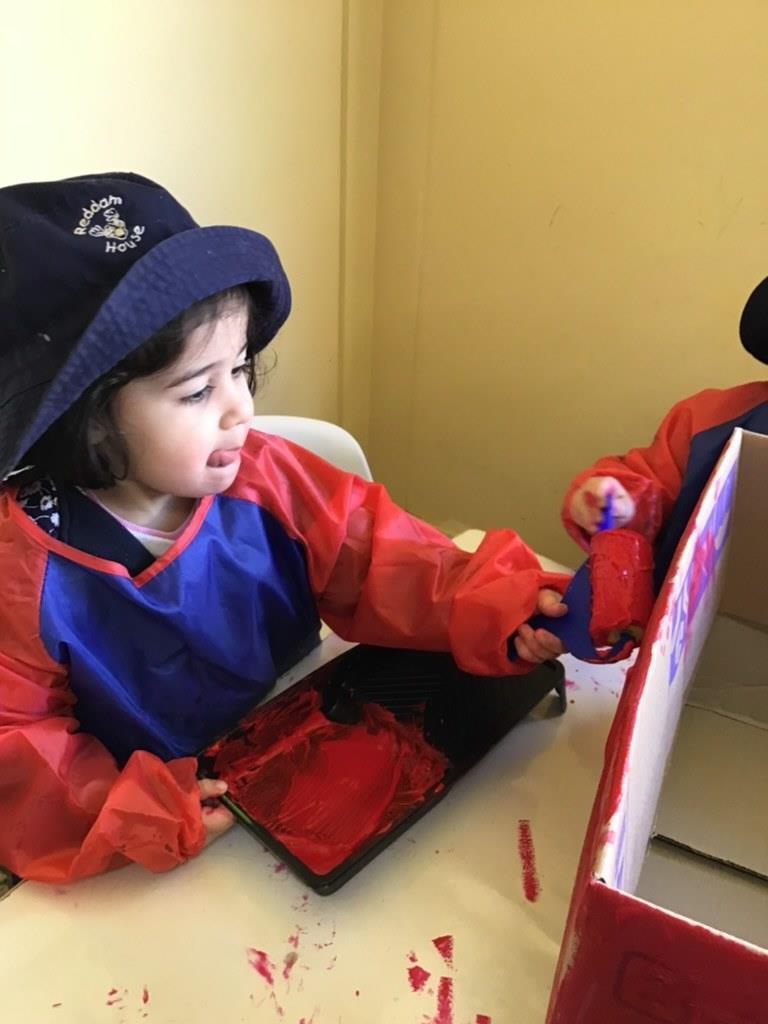


We have been exploring storytelling and this week we learnt about some different ways people tell stories, including through pictures and symbols. We learnt that Aboriginal peoples used symbols to share knowledge and tell stories. They would also draw plans and make maps in this way. We have started using a book during our morning group times where the children have time to draw together as we have our discussions. They draw pictures of what we are learning or planning to learn about. We thought about telling our own story using symbols and each child thought of a character, place or thing that they wanted to be in our story and then they drew a symbol that would represent it.

Sophie drew “a flower” Ollie drew a circle to symbolise “a boy”
Siena drew a house “it’s home” . Leonie drew “the sun” .
Olivia drew a rainbow to symbolise “a girl” Alfie drew “a book”
Lyla drew “the school”. Ben drew a person and a circle to symbolise “meeting” .
Liam drew “a cow”. Saxon drew “rain” .
Darcy drew “a banana”. Austin drew “a car”
Winnie drew “a baby”. Hugo drew “the bus” .
The symbols designed by the children have become part of our group times and they are now able to recognise them. They have been enjoying using them to tell their own stories by placing them in different orders. Most of the stories have been about their days, starting at home, then going to school and meeting their friends.
4.4: Children resource their own learning through connecting with people, place, technologies, and natural and processed materials.
5.4: Children begin to understand how symbols and pattern systems work.
Our Names
The children are interested in their names and will often point out the first letter of their name when they see it. We are working on letter recognition so this week we did a name building activity. The children practised writing their names before they were given the individual letters from their name and asked to put them in order. They were able to look at their sign-in card and match each letter to its correct position in their name. We named and sounded out each letter as the children placed them in their spots. The children are all able to recognise their names and we will continue to support them in working towards writing their names. We have been practising drawing shapes including squares and circles, as well as lines in different directions which provide the foundations for letter formation. Being able to write their full name or even just the first letter of their name gives children a sense of pride and ownership of their work.
1.3: Children develop knowledgeable and confident self-identities.
4.1: Children develop a growth mindset and learning dispositions such as curiosity, cooperation, confidence, creativity, commitment, enthusiasm, persistence, imagination and reflexivity.













4R infuses Daily Yarning Circles into our morning Welcome to Country acknowledgement

4R would like to share with you our respectful morning ritual that we have embarked on over the past two terms. A yarning circle is traditionally used to share Aboriginal and Torres Strait Islander peoples' culture and stories in an inclusive, respectful, collaborative way. In an early learning environment, the children and their teachers sit in a circle inside or out on land to talk, listen or share stories and ideas. It has been used by Indigenous peoples from around the world for centuries to learn from a collective group, build respectful relationships, and to preserve and pass on cultural knowledge.
‘We honour our Indigenous people; we honour the culture and love of the land, stories, and songs. We celebrate the heritage and the future of the first Australians. We have come from many places, and we all like different things, we are all Australians, and we are grateful to live here’ .
A yarning circle is a harmonious, creative and collaborative way of communicating to:
● encourage responsible, respectful and honest interactions between participants, building trusting relationships
● foster accountability and provide a safe place to be heard and to respond
● promote student–student interactions and student–school–community connectedness
● enrich learning experiences for students.
A yarning circle is initiated by ‘a host’ - teacher, a child, a parent or even a visitor. Yarning circles can take a number of formats, where here in our ELS classroom we have been implementing the following practices:
Sit in a circle: Children sit in a circle and are encouraged to actively listen to others’ views. Children are encouraged to understand that they are all considered equal within the circle.
Introduce the group: The host invites children to introduce themselves and share something about themselves.
Introduce focus questions: Yarning circles can be undertaken for many reasons. The host introduces the purpose of the yarning circle or the focus question to children.
Share ideas and thoughts: The host encourages children to take turns to talk and to promote reciprocal sharing and learning. Time can be allocated for children to write or draw their thoughts after each person speaks. We provide a range of paper or white boards in the middle of the circle for children to record their thoughts, or at times even hold the circle outside so children can draw their thoughts with sand, sticks, leaves and rocks.
Reflect: Resolve any actions or issues identified by the yarning circle or agree to follow up in future yarning circles.
During Term 2, each morning we have started our mornings with a collaborative 4R yarning circle. Recently, one of our yarns was inspired by the narrative “All About Friends” by Felicity Brooks and Mar Ferrero. This book inspired us to create a ‘Circle of friends' by using clay. Each child created a clay figure of themselves which was joined together into a circle symbolising their friendship and collaborative learning. Thomas and Valentine made a campfire in the middle using our classroom’s natural materials that were collected from our ‘Connecting with Nature Program’ visits at Cooper Park. We named our clay sculpture, “A Yarning Circle with Friends” .
Whilst the children were manipulating the clay, they were encouraged to pause and consider ‘What do you think makes a good friend?’ Below are the children’s thoughtful dialogue:
Thomas, "Saying, are you okay? Would you like to play with me?"
Lucas, "When I lost my bay blade, Oliver helped me to find it."
Valentine, "Sharing and playing with people. Jumping and doing cartwheels."
Phoebe, "Playing with friends in the big playground and in the garden. Also when you hug and say I love you."
Leanne, "Hugging and kissing and playing together. My friend helps me to find my hair bands."
Leo, "Hugging, playing with friends, drawing with Phoebe and playing with Leanne.”

Hannah, "Saying sorry when you are mean."
Sarah, “Choose kindness.”
Julian, “Well, you need to share and just be very patient.”
Alyssa, “Smile at your friends, say come and play with me!”
Our ‘Circle of friends' clay sculpture is proudly on display in our Stage 4R Classroom, were we welcome all families to view our collaborative sculpture, drawings and supporting documentation.
Our morning yarning circles support the Early Years Learning Framework Key Outcomes:
● 1.4: Children learn to interact in relation to others with care, empathy and respect
● 2.1: Children develop a sense of connectedness to groups and communities and an understanding of their reciprocal rights and responsibilities as active and informed citizens
● 4.4: Children resource their own learning through connecting with people, place, technologies, and natural and processed materials.
● 5.3: Children express ideas and make meaning using a range of media.
